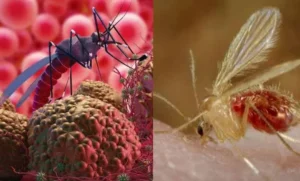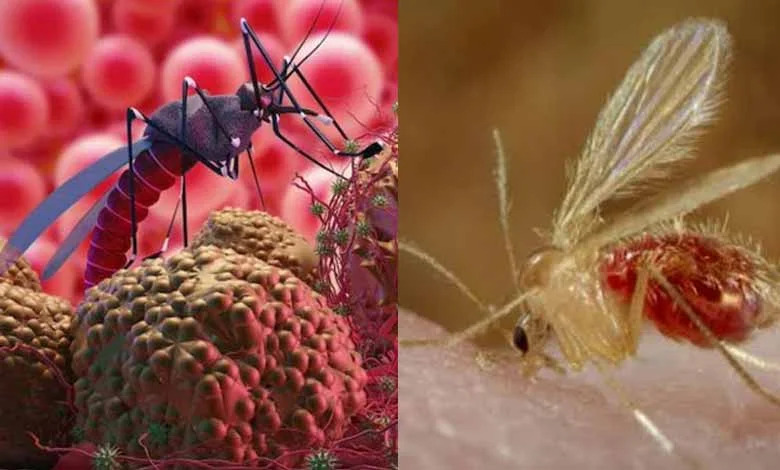
The tragic deaths of six children in Gujarat due to a suspected Chandipura virus infection have brought this relatively unknown disease into the spotlight. The incident has raised concerns and questions about the nature of the virus, its symptoms, and the potential risk it poses. This article aims to provide a comprehensive understanding of the Chandipura virus, its transmission, symptoms, diagnosis, treatment, and preventive measures.
Understanding the Chandipura Virus
What is the Chandipura Virus?
The Chandipura virus (CHPV) is a member of the Rhabdoviridae family, which also includes the rabies virus. It was first identified in the Chandipura village in Maharashtra, India, in 1965. This virus is primarily transmitted through the bite of sandflies, particularly the Phlebotomus species. Unlike the rabies virus, which primarily affects mammals, the Chandipura virus has a more pronounced impact on humans, especially children.
Epidemiology of Chandipura Virus
The Chandipura virus is endemic to certain parts of India, including Maharashtra, Gujarat, and Andhra Pradesh. Outbreaks typically occur during the monsoon season when the population of sandflies increases. Children are particularly vulnerable to the virus, and outbreaks have been associated with significant morbidity and mortality in pediatric populations.
Transmission of the Chandipura Virus
How is the Virus Transmitted?

The primary vector for the Chandipura virus is the sandfly. Infection occurs when an individual is bitten by an infected sandfly. The virus is then transmitted through the sandfly’s saliva during the blood meal. There is no evidence to suggest that the virus can be transmitted from person to person. However, the high rate of infection among children suggests that environmental factors and close proximity in living conditions may facilitate the spread of the virus within communities.
Risk Factors for Infection
Key risk factors for contracting the Chandipura virus include:
- Age: Children under the age of 15 are more susceptible.
- Geographical location: Residing in or traveling to endemic areas during the peak season for sandfly activity.
- Environmental conditions: Living in areas with poor sanitation and high sandfly populations.
Symptoms of Chandipura Virus Infection
Initial Symptoms
The initial symptoms of a Chandipura virus infection can be non-specific and may resemble those of other viral infections. They typically appear suddenly and include:
- High fever
- Severe headache
- Vomiting
- Nausea
Severe Symptoms
As the infection progresses, more severe symptoms may develop, particularly affecting the central nervous system. These include:
- Altered mental status
- Seizures
- Loss of consciousness
- Encephalitis (inflammation of the brain)
- Coma
Complications and Mortality
The most severe complications of a Chandipura virus infection are neurological. Encephalitis can lead to brain damage and is often fatal. The mortality rate among children with severe infection is high, underscoring the need for prompt medical attention and intervention.
Diagnosis of Chandipura Virus Infection
Clinical Diagnosis
Clinical diagnosis of a Chandipura virus infection can be challenging due to the non-specific nature of the initial symptoms. Healthcare providers often rely on the patient’s history, including recent travel to endemic areas and exposure to sandflies, to guide their diagnosis.
Laboratory Tests
Definitive diagnosis is achieved through laboratory testing. The following methods are commonly used:
- Polymerase Chain Reaction (PCR): Detects viral RNA in blood or cerebrospinal fluid (CSF) samples.
- Serology: Measures antibodies against the Chandipura virus in the blood.
- Virus Isolation: Involves culturing the virus from blood or CSF samples, though this is less commonly used due to the time and expertise required.
Treatment and Management of Chandipura Virus Infection
Supportive Care
Currently, there is no specific antiviral treatment for Chandipura virus infection. Management focuses on supportive care to relieve symptoms and prevent complications. Key aspects of supportive care include:
- Hydration: Ensuring adequate fluid intake to prevent dehydration.
- Antipyretics: Administering medications like acetaminophen to reduce fever.
- Anticonvulsants: Using drugs to control seizures in patients with neurological involvement.
- Intensive Care: Providing critical care support for patients with severe symptoms, including mechanical ventilation if necessary.
Experimental Treatments
Research is ongoing to develop specific antiviral therapies and vaccines for the Chandipura virus. However, as of now, these treatments are not available for widespread clinical use.
Prevention of Chandipura Virus Infection
Avoiding Sandfly Bites
The most effective way to prevent a Chandipura virus infection is to avoid sandfly bites. Preventive measures include:
- Using Insect Repellents: Applying repellents containing DEET on exposed skin.
- Wearing Protective Clothing: Wearing long-sleeved shirts and long pants to minimize skin exposure.
- Sleeping Under Mosquito Nets: Using insecticide-treated nets, especially in endemic areas.
Environmental Control
Reducing the population of sandflies through environmental control measures can also help prevent the spread of the Chandipura virus. These measures include:
- Sanitation Improvements: Maintaining cleanliness and proper waste disposal to eliminate sandfly breeding sites.
- Insecticide Spraying: Applying insecticides in and around homes to reduce sandfly populations.
Community Awareness
Educating communities about the risk of Chandipura virus infection and the importance of preventive measures is crucial. Public health campaigns can play a vital role in reducing the incidence of the disease.
Conclusion
The recent outbreak of suspected Chandipura virus infection in Gujarat, resulting in the deaths of six children, highlights the urgent need for awareness and preventive measures. Understanding the nature of the virus, its transmission, symptoms, and available treatments is essential for managing and preventing future outbreaks. While research continues towards finding specific treatments and vaccines, current preventive strategies focus on minimizing exposure to sandflies and improving community awareness.

